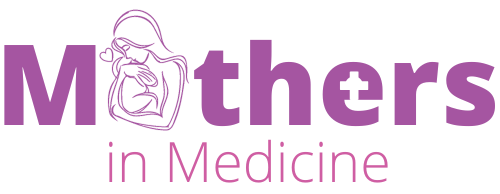Pregnancy is a journey filled with anticipation and preparation. As the body undergoes tremendous changes, exercising becomes crucial, not just for maintaining health but also for facilitating a smoother delivery.
This comprehensive guide details 10 beneficial workouts for expectant mothers aiming for a normal delivery. Each exercise is chosen for its effectiveness in strengthening key muscle groups and enhancing overall flexibility, crucial factors in easing the delivery process.
1. Pelvic Tilts Bridges
Pelvic tilts and bridges are integral exercises for strengthening the core and lower back muscles, aiding significantly in labor and delivery. Pelvic tilts help in strengthening abdominal muscles and easing back pain.
It involves lying on the back with knees bent, tightening the abdominal muscles, gently tilting the pelvis upward, holding for a few seconds, and relaxing.
2. Bridges
Similar to pelvic tilts, bridges focus on the lower back and hip muscles. The exercise involves lying in the same initial position, lifting the hips to create a straight line from the shoulders to the knees, holding, and then gently lowering the hips back to the floor.
3. Squats
Squats are effective in strengthening the thighs and opening up the pelvis, making them an ideal workout for preparing for normal delivery.
- Technique: Stand with feet shoulder-width apart, lower into a squat position as if sitting back into a chair, keep the back straight, and ensure the knees don’t extend past the toes. Hold the squat for a few seconds before rising back up.
- Benefits: This exercise not only strengthens the legs and hips but also helps in improving the endurance needed during the labor process.
4. Prenatal Yoga
Prenatal yoga combines gentle stretching and breathing techniques, both of which are incredibly beneficial during labor.
- Safe Poses: Focus on poses that enhance flexibility without putting strain on the abdomen, such as the cat-cow stretch, butterfly pose, and side stretches.
- Breathing Techniques: The breathing exercises practiced in prenatal yoga, such as deep, controlled breathing, are invaluable for managing pain and stress during labor.
5. Walking
Walking is a simple, low-impact workout ideal for pregnant women at any stage. A moderate, comfortable pace is ideal. It’s important to avoid overexertion. Regular walks, even if short, can significantly contribute to maintaining fitness levels and enhancing mood and stamina.
6. Swimming

Swimming is often hailed as one of the best forms of workout for pregnant women. It’s not just about staying fit; swimming offers a range of benefits specifically tailored to the needs of an expectant mother:
| Benefit | Description |
|---|---|
| Cardiovascular Health | Swimming improves heart health and increases lung capacity, ensuring better oxygen flow to both the mother and the baby. |
| Full-Body Workout | It engages multiple muscle groups simultaneously, including the arms, legs, and core, ensuring a balanced workout. |
| Reduced Joint Stress | The buoyancy of water supports the body’s weight, significantly reducing the stress on joints, which is particularly beneficial as pregnancy progresses and the body carries more weight. |
| Temperature Regulation | Swimming keeps the body cool, which is important as overheating can be a concern during pregnancy. |
7. Water Aerobics
Water aerobics classes, often designed specifically for pregnant women, provide a safe environment for staying active:
- These classes help maintain cardiovascular health, crucial for the stamina needed during labor and delivery.
- Focused exercises in water aerobics target key muscle groups used during childbirth, such as the pelvic floor, back, and abdominal muscles.
- Joining a water aerobics class can also provide social benefits, allowing expectant mothers to connect and share experiences.
- The workout can be easily modified to suit different fitness levels and stages of pregnancy.
8. Inner Thigh Exercise
The inner thigh exercise is crucial for strengthening the adductor muscles, which play a key role during the pushing phase of labor.
Proper technique involves lying on one side, preferably supported with pillows for comfort, and lifting the top leg in a slow, controlled motion. This not only targets the inner thigh muscles but also helps in maintaining balance and coordination.
This exercise also enhances the flexibility of the pelvic and thigh muscles, which can be beneficial during childbirth.
9. Outer Thigh Exercise
Strengthening the outer thighs is equally important as it contributes to overall pelvic stability. Working the outer thigh muscles ensures a balance between the inner and outer muscles of the thigh, important for maintaining good posture and reducing pelvic discomfort.
Also, strong outer thighs can enhance overall mobility and endurance, vital for the physical demands of late pregnancy and labor.
10. Tailor Sitting
Tailor sitting is an excellent exercise for opening the pelvis and preparing it for childbirth. This position helps in engaging and strengthening the muscles of the pelvic floor, which support the uterus, bladder, and intestines.
Sitting in this position also aids in improving blood circulation to the lower body, which can reduce swelling and varicose veins. Regular practice of tailor sitting can improve posture and reduce lower back pain, a common complaint during pregnancy.
Benefits
Consistent practice of this exercise can significantly enhance pelvic flexibility and prepare the muscles for childbirth: Increased pelvic flexibility can lead to an easier labor process as the muscles are more accustomed to the stretching and expanding that occurs during childbirth.
Strengthening these muscles can also aid in a quicker recovery post-delivery, especially in terms of regaining muscle tone.
Stretching and Relaxation Techniques

Incorporating stretching exercises into a prenatal routine offers multiple benefits. Regular stretching can help relieve muscle tension and soreness, a common issue as the body adjusts to its growing size.
Improved flexibility can aid in the birthing process, making it easier for the body to adapt to different labor positions.
Relaxation Techniques
Techniques like deep breathing and visualization can significantly reduce stress and anxiety levels, which is beneficial for both the mother and the baby. Learning and practicing these techniques can also provide tools for managing pain during labor, enhancing the overall childbirth experience.
Additional Advise: Do the Ball Exercises
Using a birthing ball during pregnancy can greatly contribute to physical comfort and readiness for childbirth:
- Posture Improvement: Regular use of the ball encourages good posture, which is essential as the body’s center of gravity changes.
- Core Strengthening: Gentle movements on the ball can strengthen the core muscles, improving balance and stability.
The birthing ball is not just for pregnancy; it’s also a useful tool during labor. Different positions on the ball can provide pain relief during contractions. The gentle rocking and bouncing movements can help in aligning the baby in the optimal position for birth.
Benefits of Exercise During Pregnancy
Regular exercise during pregnancy offers numerous health benefits. It helps in:
- Reducing Common Discomforts: Working out can alleviate backaches, constipation, bloating, and swelling, common complaints during pregnancy.
- Enhancing Mood and Energy: Physical activity boosts endorphin levels, improving mood and energy, which can fluctuate significantly during pregnancy.
- Improving Sleep Patterns: Regular exercise can lead to better sleep, addressing the common issue of insomnia in pregnant women.
- Managing Weight Gain: It helps in maintaining a healthy weight, preventing excessive weight gain which can complicate pregnancy and delivery.
- Strengthening Stamina and Muscles: Crucial for the labor and delivery process, exercise increases stamina and strengthens muscles, particularly those in the abdomen and pelvic area.
In addition to these personal benefits, working out during pregnancy can also have positive effects on the baby, including healthier birth weights and a reduced risk of developing certain health conditions.
Precautions and Contraindications
Exercise during pregnancy should always be approached with caution. Women with pre-existing health conditions or pregnancy-induced complications should seek medical advice to understand safe limits.
Avoid Risky Activities
Activities that involve a high risk of falling or abdominal injury should be avoided. Also, it’s important to monitor the intensity of workouts. Overexertion can be harmful and should be avoided.
As the pregnancy progresses, the body’s center of gravity shifts and joints become looser, increasing the risk of injury. Exercises should be adjusted accordingly.
Tailor the Workout to Your Pregnancy Needs
Exercising during pregnancy isn’t about maintaining pre-pregnancy workout intensities; it’s about adapting to the body’s changing needs. Pregnant women should focus on low-impact exercises that minimize stress on the body while effectively strengthening muscle groups used during childbirth.
Workouts that strengthen the pelvic floor, abdomen, and back muscles are crucial. Incorporating flexibility exercises, like stretching and yoga, can also be highly beneficial. If you’re stuck with an unpleasant odor, you can use home remedies for help.
Listen to Your Body

It’s essential for pregnant women to listen to their bodies and avoid pushing themselves too hard. Comfort and safety should always be the priority. Before starting any workout program, consulting with a healthcare provider is essential to ensure that the exercises are safe for both the mother and the baby.
FAQs
Can working out during pregnancy reduce the duration of labor?
Yes, it can. Exercises, particularly those that strengthen the pelvic floor and core, can enhance muscle endurance and flexibility. This can lead to more effective pushing during labor, potentially shortening its duration.
However, it’s important to note that every pregnancy and labor is unique, and numerous factors influence labor duration.
Are there specific exercises to help turn a breech baby?
While a workout cannot guarantee the turning of a breech baby, certain positions may encourage the baby to move into a head-down position. Exercises like pelvic tilts, the breech tilt (lying on your back and raising your hips), and prenatal yoga can create more space in the pelvis, giving the baby more room to turn.
How soon after delivery can I resume exercise?
This varies based on individual recovery, the type of delivery (vaginal or cesarean), and any complications that may have arisen. Generally, light workouts such as walking or pelvic floor exercises can be started soon after delivery, often within days for a straightforward vaginal birth.
However, more strenuous workouts should typically wait until after the postnatal check-up, usually 6-8 weeks post-delivery. Always get clearance from your healthcare provider before starting any postnatal working-out routine.
Can exercise during pregnancy help with postpartum recovery?
Yes, regular workouts can positively impact postpartum recovery. It helps in maintaining good physical condition, which can lead to a faster recovery of strength and endurance after childbirth.
Additionally, workouts that strengthen the pelvic floor can aid in quicker recovery from perineal tearing or episiotomy and can reduce the risk of incontinence.
Is it safe to do abdominal exercises during pregnancy?
While some abdominal workouts are safe during pregnancy, others should be avoided, especially as the pregnancy progresses.
Exercises like planks can be safely performed in the first trimester, but it’s advisable to avoid workouts that involve lying flat on your back or that put excessive strain on the abdominal muscles in later trimesters.
Modified, pregnancy-safe abdominal exercises, like standing pelvic tilts or seated abdominal bracing, can be beneficial.
Can exercise during pregnancy prevent the need for a C-section?
Working out cannot guarantee the avoidance of a cesarean section. The necessity for a C-section can depend on various factors, including the baby’s position, the mother’s health, and unforeseen complications.
Regular exercise can, however, help in maintaining a healthy pregnancy, which might indirectly reduce the likelihood of complications that could lead to a C-section.
The Bottom Line
In summary, these exercises and techniques offer a comprehensive approach to preparing the body for normal delivery. They not only focus on physical strength and endurance but also address flexibility, relaxation, and mental preparedness, all of which are crucial for a positive childbirth experience.

